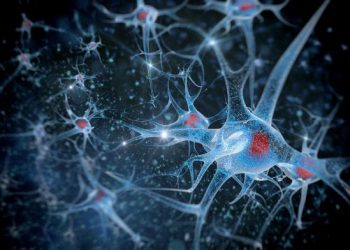Renal cell carcinoma is a type of kidney cancer. Each kidney makes urine by removing waste and other extra water from the blood. The urine goes down a tube called a ureter into the bladder.
Treatment options include surgery and medicines that fight cancer or stop it from spreading. Doctors also are testing new ways to treat this cancer.
Symptoms
Renal cell carcinoma is cancer that starts in the cells that line tubules in the kidney. It usually starts in one kidney, but it sometimes starts in both. It can also spread to other parts of the body. There are several types of renal cancer. The most common type is called clear cell renal cancer. This is the type that most often occurs in adults. But other types of kidney cancer can develop in adults, too. These include transitional cell cancer of the renal pelvis and ureters (the area that collects urine) and a rare type of soft tissue sarcoma that begins in the blood vessels and connective tissue around the kidney. Kidney cancer is very different from the more common type of bladder cancer, which starts in the ureters and the bladder.
The kidneys are 2 bean-shaped organs about the size of a bar of soap. They sit in the middle to lower part of the back, one on each side of the spine. The kidneys help filter waste and excess fluid from the blood. They also send urine to the bladder through tubes called ureters. The urine is then passed from the bladder to the outside of the body through a tube called the urethra.
Smoking and misuse of certain pain medicines can raise the risk of developing renal cell cancer. But not everyone who smokes or uses these medicines gets the disease. Having a family history of the disease can also increase your chance of getting it. And some inherited genetic syndromes can raise your risk for developing the disease, including von Hippel-Lindau disease and hereditary papillary renal cell carcinoma.
When kidney cancer spreads to other areas of the body, it is known as metastatic renal cell carcinoma. The disease can move from the kidney to the lungs, bones and abdomen.
People who have metastatic kidney cancer may not have any symptoms at first. But the cancer can grow quickly and cause other health problems, such as high blood pressure and swelling of the legs (edema).
There are several ways to treat kidney cancer. Medicines can kill cancer cells or stop them from growing. Surgery can remove the tumor and some of the surrounding tissue. Radiation therapy can be used to shrink tumors or ease pain from a large tumor. Other treatments that can be used include cryoablation and radiofrequency ablation. Cryoablation is a procedure that uses cold gas to freeze the tumor. Radiofrequency ablation involves inserting a needle through the skin into the kidney tumor. An electrical current then passes through the needle, which destroys the cancer cells.
Diagnosis
Scientists don’t know what causes most renal cell carcinomas. But they do know that changes in certain genes increase a person’s chance of getting them. And they’re working to find out what makes these changes, so they can prevent them.
The first step in diagnosing renal cell carcinoma is a physical exam and a history of the person’s health, including past illnesses and treatments. Then healthcare providers use imaging tests to look at the kidneys and the surrounding tissues. These include X-rays, CT scans, and magnetic resonance imaging (MRI).
Most people who get renal cell carcinoma have stage 1 disease. But some people have stage 2, 3, or 4. The stages depend on the size of the tumor and whether it has spread to nearby tissue or organs.
To find out what type of renal cell cancer a person has, the care team may do a biopsy. In a biopsy, a healthcare provider removes a small piece of the tumor and looks at it under a microscope to check for cancer cells. The doctor can also use these results to help them decide what treatment is best.
Healthcare providers can also look at the way the cancer cells are growing and if they’re changing (grading them). They can do this by looking for certain changes in the cells’ nucleus. These changes can be used to predict how quickly the cancer will grow and spread. The doctors can also tell if the cancer cells are more like normal kidney cells or more like other types of cancer cells.
A doctor can also look for other signs of cancer in a person’s body, such as pain in the back or belly, and weight loss that doesn’t go away. They can also check for a person’s blood pressure and pulse.
Other kinds of cancer treatments, such as radiation and chemotherapy, usually don’t work well against renal cell carcinoma. But they can be used to ease symptoms and reduce pain if a person has them. Talk to your urologist about the pros and cons of these treatments for you.
Treatment
The kidneys are a pair of organs, one on each side of the backbone above the waist. Tiny tubules in the kidneys filter blood to get rid of waste and make urine. The urine passes through tubes called ureters into the bladder. The bladder holds the urine until it is passed out of the body through a tube called the urethra. There are 2 types of renal cell cancer, clear-cell and ccRCC (also known as clear-cell nephrogenic renal carcinoma).
Treatment options for RCC depend on the size of the tumor and whether it has spread beyond the kidney. Smaller and localized tumors have better outcomes with surgical removal than larger or more advanced cancers.
Chemotherapy drugs are used to kill cancer cells or stop them from growing. When taken by mouth or injected into a vein or muscle, these drugs enter the bloodstream and can reach cancer cells throughout the body (systemic chemotherapy).
A combination of treatments may be needed to treat RCC. In addition to chemotherapy, targeted therapy and immunotherapy can improve survival for people with more advanced RCC.
Targeted therapies target specific parts of cancer cells and can help prevent them from growing. For example, cancer cells often grow by making new blood vessels to supply them with oxygen and other nutrients. Drugs that block the formation of these new blood vessels can kill the cancer cells. One example of a targeted therapy is sorafenib, which is also used to treat other types of kidney cancer.
Another option for treating advanced RCC is to use a procedure called arterial embolization. This involves inserting a catheter (thin tube) into the main blood vessel that carries blood to the kidney. Then small pieces of a special gelatin sponge are injected into the blood vessel. These sponges block the flow of blood to the kidney, which stops the cancer cells from getting the oxygen and other nutrients they need to grow.
A type of immunotherapy that uses manmade antibodies or genetically engineered cells to boost the immune system is also being studied to treat RCC. Immunotherapy is a promising new area of research, but it is still under study for how well it works against RCC.
Prevention
Cancer starts when cells in the body begin growing and dividing out of control. When this happens in the kidneys, it can develop into a tumor. Over time, the tumor can also spread to other parts of the body through blood vessels and tissue. This process is called metastasis.
Cancers such as renal cell carcinoma can be very difficult to prevent. However, there are several steps that can help lower a person’s risk of developing this type of cancer. People who smoke are at an increased risk for developing this disease and should try to quit smoking. High blood pressure is also a significant risk factor for developing this disease, and people who have high blood pressure should get treatment to help reduce their chances of developing this cancer. In addition, it’s important to avoid exposure to any known carcinogens.
In general, the older a person is when they develop kidney cancer, the greater their chance of dying from the disease. In the United States, most people who develop this type of cancer are between the ages of 50 and 70. Men are twice as likely to develop this disease than women, and this sex ratio has been consistent over time and across different countries.
The etiology of this disease is not well understood, and the underlying biology remains unclear. This may explain why there are large geographic and temporal variations in incidence rates, which have not been explained by the few modifiable risk factors that are currently identified. These include tobacco smoking abstinence or cessation, avoiding overweight/obesity and controlling hypertension. Intervening factors along the diagnostic pathway, including improved screening using imaging techniques and biomarkers, would also improve disease management and ultimately prevention.
Researchers are working hard to identify other potential risk factors for this disease. For example, some research shows a link between certain genetic disorders and an increased risk for kidney cancer. The rare hereditary papillary renal cell carcinoma syndrome is associated with a specific form of this cancer and increases the risk for developing the condition by three times. This disorder is caused by mutations in a gene on chromosome 7 called the MET oncogene, which promotes cell growth and survival.









